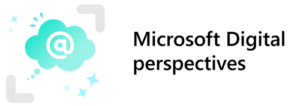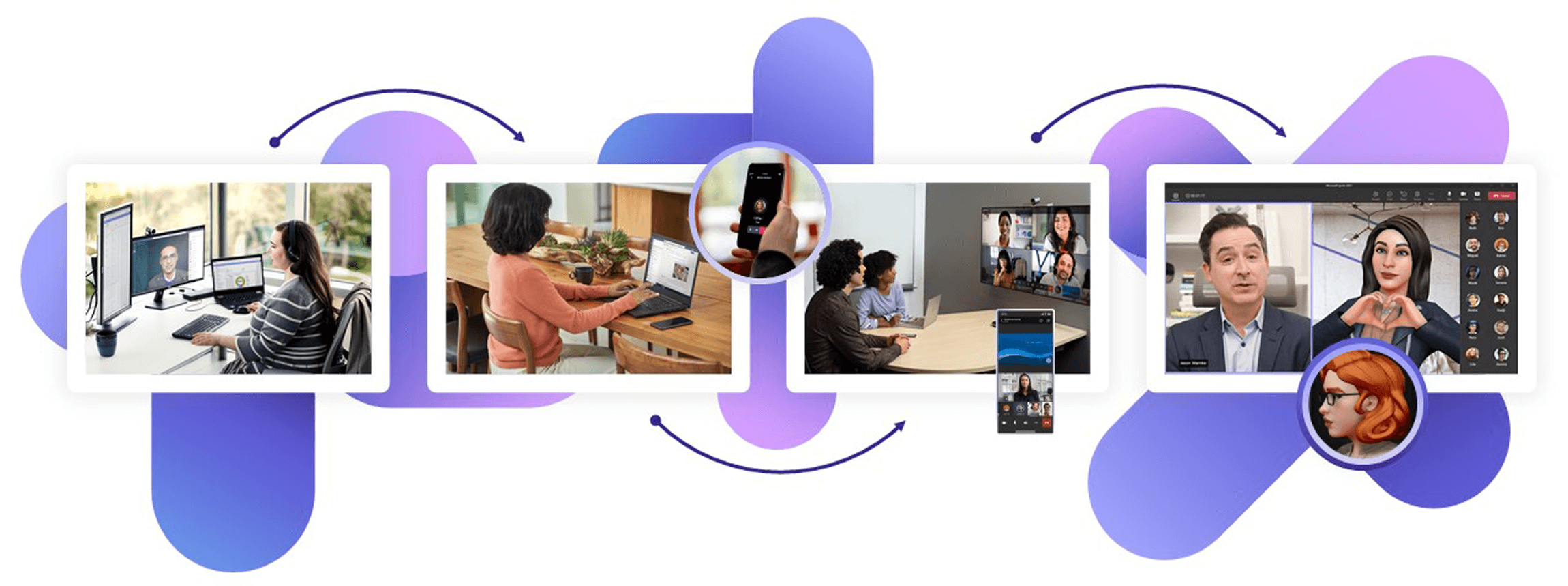 [Editor’s note: This content was written to highlight a particular event or moment in time. Although that moment has passed, we’re republishing it here so you can see what our thinking and experience was like at the time.]
[Editor’s note: This content was written to highlight a particular event or moment in time. Although that moment has passed, we’re republishing it here so you can see what our thinking and experience was like at the time.]
Wow, what a run it has been for Microsoft Teams!
When Microsoft Teams was first introduced in late 2016, no one could have anticipated the journey that we—Microsoft’s customer zero—would go on over such a short amount of time. The “new chat-based workspace in Office 365” promised an entirely new experience that would bring people, conversations, content, and tools together in ways that empowered users—including our employees—to collaborate and achieve more.
We were eager to start using Microsoft Teams here at Microsoft. Our team—Microsoft Digital Employee Experience—deployed it across the company as soon as it launched. We’ve learned a ton along the way, lessons that the product group used to make Microsoft Teams even more enterprise ready.
Our employees’ ability to collaborate has grown as Microsoft Teams has grown. We’ve developed an amazing flywheel—embracing new capabilities, collecting feedback from our employees, and funneling them back to our product group partners, which in turn has

fueled more innovation in the product. we’ve used Microsoft Teams to communicate, share ideas, and get work done.
Fast forward to the onset of the COVID-19 pandemic, Microsoft Teams allowed us to keep working and to stay connected as we shifted to working from home. We were able to come together through meetings, chats, and calls, collaborate, and automate business processes, all within a single app. Microsoft Teams enabled our employees and customers to successfully work remotely, for students to continue their education, and for all of us to stay connected on a personal level.
Having built a product that is now a staple in our everyday lives, the Microsoft Teams product group continues to innovate, and has taken the learnings from the past five years to improve its user experience. Things like creating more natural and engaging meeting experiences, enabling employees to connect seamlessly with those inside and outside of their networks, and providing ways to make remote presentations richer and more impactful have all helped elevate the Microsoft Teams experience.
In celebration of its fifth birthday, let’s look at five ways Microsoft Teams has helped transform the way we work at Microsoft.

No. 1: Shifting successfully from on-site to remote to hybrid
While colleagues in China were already home and working with Microsoft Teams, the Seattle area was the first US region to get hit hard by COVID 19. Around 50,000 Microsoft employees were some of the initial US residents to be asked to pack up their desks and work from home. With employees already being heavy Microsoft Teams users, product usage went up significantly on the first day of remote work. Microsoft Teams meetings more than doubled (2.5 times) globally from 2020 to 2021, and we anticipate this will continue to climb in 2022. Real-time connection and collaboration within Microsoft Teams were key components of transitioning from on-site to remote work, with users sending on average 45 percent more chats per week from 2020 to 2021.
As we shift to a new normal of hybrid work, Microsoft Teams will continue to be a critical component of our success. Preparing physical space (conference rooms), expanding capabilities within Microsoft Teams, and adapting to new cultural norms when conducting Microsoft Teams meetings will all be key for an improved hybrid meeting experience.
No. 2: Making Microsoft Teams a hub for inclusivity
An unexpected result of remote work has been an unprecedented 20 percent increase in meeting experience satisfaction. In our bi-annual employee survey, our net satisfaction (NSAT) for meeting experience climbed to 149, up from 125 two years prior. The primary reason is simple—universal remote meeting participation created an even playing field. Our more inclusive atmosphere for all meant our formerly remote participants were no longer at a disadvantage relative to their peers who used to attend in person.
A key priority as we shift to hybrid is to retain that inclusive environment and employee satisfaction. One way we can do this is by taking advantage of new features in Microsoft Teams, such as front row, as well as new hardware in meetings rooms such as AI-powered cameras, so everyone can participate in meetings. We will continue to take advantage of Microsoft Teams features that drive interaction and participation, like meeting chat and the “raise hand” feature, as well as reactions, emojis, and integrated GIF support. This ensures our employees will have a more personal and interactive meeting experience, whether they’re joining remotely or attending from a conference room.
Learn how we’re driving inclusive and effective meetings at Microsoft with Microsoft Teams.
No. 3: Fostering real-time and asynchronous collaboration
Our monthly active use of Microsoft Teams channels has gone up nearly 200 percent. Microsoft Teams continues to be our hub for creating focused spaces for seamless collaboration, and has also helped our employees and their teams better communicate, collaborate, and manage access to files and notes. And as usage has gone up, so has satisfaction in the way we collaborate. We also saw a 42 percent increase in “after hours” Microsoft Teams chats from 2020 to 2021, allowing users to communicate in a more flexible manner and fostering the need for an asynchronous way to collaborate. Additionally, our employees report that they are collaborating more effectively—our collaboration NSAT increased by 10 percent after we started working remotely.
With apps like Yammer and Microsoft Power Platform now integrated into Microsoft Teams, this has further helped users actively engage with their colleagues in several new and exciting ways. And going forward, Microsoft Loop will enhance this real-time collaboration, allowing users to create content by combining a powerful and flexible canvas with portable components that move freely and stay in sync within Microsoft Teams and across other applications.
No. 4: Boosting your productivity with Microsoft Teams
It’s no secret that companies that remained productive during the COVID era used the latest technology to continue working effectively and efficiently. Microsoft Teams has been a large factor in this. Companies like Accenture, Toyota, Kohler, Lumen, Ernst & Young, and Pfizer are just a few of the companies that use Microsoft Teams to keep their global enterprises running successfully.
Microsoft Teams’ shift from a tool that was originally focused solely on collaboration, to an application that helps deliver on business process and automation, has enabled enterprises like Microsoft to help their employees stay productive during the unique challenges of remote and now hybrid work. Additionally, alongside the company’s use of Microsoft Teams, Microsoft has also seen a sharp increase in the internal use of the Microsoft Power Platform, including a 27 percent increase in Microsoft Power Apps usage and a 93 percent increase in Microsoft Power Apps usage from 2020 to 2021. This growth has been fueled in part by how our employees are increasingly using the two platforms together.
At Microsoft, our employees use a set of helpful tips and tricks to get the most out of Microsoft Teams and keep their workday and usage of the application as productive as possible. While we’ve introduced several new applications to Microsoft Teams over the past five years, we’ve also learned and instilled best practices for things like Microsoft Teams meetings. This includes considerations like meeting length and established norms before you start a call, so participants know the expectations and outcomes for a meeting.
Read these tips from Microsoft for staying productive in an evolving hybrid world.
No. 5: Learning and evolving
As Microsoft’s customer zero, we’re constantly learning from our employees on ways to improve and evolve Microsoft Teams, and this happens on a rapid basis. We share this feedback with our colleagues on the product group, and they use it to shape everything from how they roll out new Microsoft Teams features to the designing Microsoft Teams policies. Staying ahead of employees’ and customers’ growing needs has never been more important. And while those of us responsible for deploying Microsoft Teams to our 280,000 full-time employees and vendors are in this constant state of listening and learning, we’ve realized that for our employees, having access to mechanisms that allow them to be more informed is an opportunity as well.
That’s why this past year, we integrated Microsoft Viva—an integrated employee experience platform—into Microsoft Teams. Modules like Viva Learning help employees discover learning opportunities and recommended training to help them build their skills through the flow of their workday. And one thing the pandemic and remote work has taught us is that work fatigue and digital overload is real and can be challenging to our well-being. The Viva Insights module built into Microsoft Teams can help employees achieve better balance and reinforce boundaries between work and life.
As we anticipate the future, there is so much excitement in where Microsoft Teams is headed! We’re preparing for advancements like Microsoft Mesh, which will enable presence and shared experiences through mixed reality, from anywhere and on any device. This is just one aspect of the continued evolution of the Microsoft Teams experience. There has been so much growth in the past five years for Microsoft Teams, but one thing we know for sure is that our employees will use Microsoft Teams to connect, collaborate, and explore with even more depth and dimension. Here’s to the next five years of our Microsoft Teams journey!

Learn more about advancing your meetings with the Microsoft Teams Meeting guide.
Discover reinventing Microsoft’s Employee Experience for a hybrid world.
Read more about using Microsoft Teams and ServiceNow to enhance end user support.




